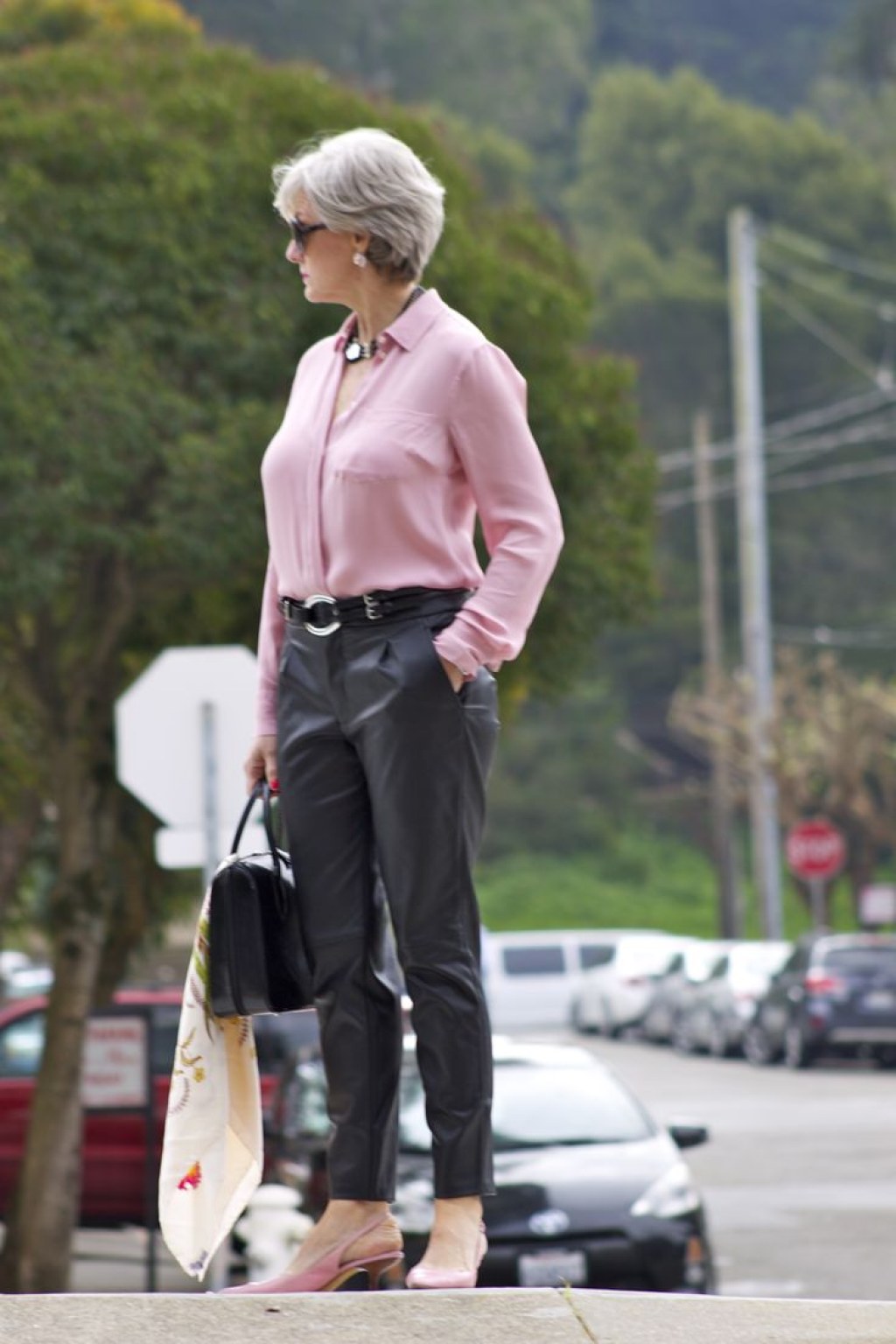Unveiling The Ever-Changing World Of Fashion: Where Fashion Trends Come And Go – Embrace The Evolution!
Fashion Trends Come and Go
Introduction
Hello Readers,
1 Picture Gallery: Unveiling The Ever-Changing World Of Fashion: Where Fashion Trends Come And Go – Embrace The Evolution!

Welcome to our article on the ever-changing world of fashion trends. As fashion enthusiasts, we understand the excitement and anticipation that comes with each new trend. However, it is essential to acknowledge that fashion trends come and go, constantly evolving and reshaping the industry. In this article, we will explore the intricacies of fashion trends and their impact on our lives. So, let’s delve deeper into this fascinating topic and discover the ever-changing nature of fashion.
What Are Fashion Trends?

Image Source: pinimg.com
🔍 Fashion trends refer to popular styles or designs in clothing, accessories, and overall appearance that gain popularity within a specific period. These trends are influenced by various factors such as cultural movements, celebrity influence, social media, and the changing preferences of consumers. Fashion trends can range from clothing silhouettes, color palettes, patterns, fabrics, and even specific accessories or footwear styles.
🔍 Fashion trends are not limited to a singular style; they encompass a wide range of aesthetics, catering to different tastes and preferences. Some trends may be bold and edgy, while others could be more minimalistic and timeless. The ever-evolving nature of fashion ensures that there is always something for everyone.
🔍 Fashion trends are not exclusive to women’s fashion; they extend to menswear, children’s clothing, and even lifestyle choices such as hairstyles and makeup. The fashion industry thrives on innovation and constantly reinvents itself to stay relevant in the fast-paced world we live in.
Image Source: instagram.com
🔍 It is crucial to note that fashion trends are cyclical. What was once popular in the past may resurface and become trendy again, only with a modern twist. This cyclical nature allows fashion to reinterpret and reimagine past styles, giving them a fresh appeal for the present generation.
🔍 Fashion trends also vary across different regions and cultures. What might be considered fashionable in one country may not necessarily be the same in another. This diversity adds richness and uniqueness to the world of fashion, making it a truly global phenomenon.
🔍 Understanding fashion trends is not merely about following the latest fads; it is about appreciating the creative expression and self-confidence that fashion brings to individuals. It is a form of art that allows us to showcase our personalities, cultural identities, and individuality.
Who Shapes Fashion Trends?
🔍 Fashion trends are shaped by a multitude of influencers who have a significant impact on the industry. These influencers can be individuals, celebrities, fashion designers, stylists, brands, and even social media platforms.
🔍 Fashion designers play a crucial role in setting trends. Their innovative designs and creative vision influence the direction of the industry. Designers showcase their collections during fashion weeks and events, where their creations are scrutinized and admired by fashion enthusiasts and industry insiders.
🔍 Celebrities have a massive influence on fashion trends. Their red carpet appearances, street style, and social media presence can instantly make a particular style or accessory popular. People often look up to celebrities for fashion inspiration and strive to imitate their iconic looks.
🔍 Brands and retailers also play a vital role in shaping fashion trends. They interpret the latest runway styles and make them accessible to the masses through their collections. Additionally, collaborations between brands and designers can spark new trends and create a buzz within the industry.
🔍 Social media platforms have revolutionized the way fashion trends spread. Influencers and fashion bloggers have emerged as powerful trendsetters. Their curated content, outfit ideas, and product recommendations have a significant impact on consumer choices and shape the latest trends.
🔍 Ultimately, fashion trends are a result of the collective efforts of various stakeholders in the fashion industry. It is a collaborative process that merges creativity, consumer demand, and cultural influences.
When Do Fashion Trends Emerge?
🔍 Fashion trends emerge at different times and follow distinct cycles. Some trends can be short-lived, while others may have a longer lifespan and become timeless classics.
🔍 Fashion weeks, held in fashion capitals such as Paris, Milan, London, and New York, are significant events where designers showcase their latest collections. These events often set the tone for upcoming trends and forecast the direction of the industry.
🔍 Seasonal transitions also play a role in the emergence of new trends. As the weather changes, people adapt their wardrobes accordingly, giving rise to new styles and silhouettes.
🔍 The influence of cultural movements and historical events cannot be understated. They often inspire designers to create collections that reflect the prevailing sentiments of the time. For example, the punk movement of the 1970s gave birth to edgy and rebellious fashion trends.
🔍 Social media and the internet have accelerated the speed at which fashion trends emerge. With instant access to global fashion, consumers can discover and adopt new trends quickly. Online platforms also allow fashion enthusiasts to share their personal style, further propelling the spread of trends.
🔍 It is important to note that not all trends gain equal popularity. Some may fizzle out quickly, while others become mainstream and have a lasting impact. The timing, context, and consumer reception play a crucial role in determining the success of a fashion trend.
Where Do Fashion Trends Originate?
🔍 Fashion trends can originate from various sources and locations, each contributing to the dynamic nature of the industry.
🔍 High fashion and luxury brands often set the tone for upcoming trends. Their runway shows and designer collaborations influence the direction of the industry. These trends eventually trickle down to mass-market brands and retailers, making them accessible to a broader audience.
🔍 Street style has become a significant source of inspiration for fashion trends. Fashion-forward individuals who experiment with unique combinations and showcase their personal style on the streets often influence the industry. Photographers capture these street style moments, and they gain attention on social media platforms.
🔍 Subcultures and niche communities also play a role in shaping fashion trends. These groups develop their distinct styles and aesthetics, which can later gain mainstream recognition. Punk, grunge, and hip-hop subcultures are examples of how specific communities have influenced fashion trends.
🔍 Historical eras and cultural influences provide abundant inspiration for fashion trends. Designers often draw from the past and reinterpret iconic styles to create something new and relevant. Retro fashion and vintage aesthetics continue to inspire designers and consumers alike.
🔍 Globalization has made fashion trends more accessible and diverse. Designers and consumers are constantly exposed to various cultures and traditions, allowing for cross-pollination of styles. Traditional garments and textiles from different countries can inspire contemporary fashion trends.
🔍 In summary, fashion trends can originate from high fashion runways, street style, subcultures, historical eras, and cultural influences. The amalgamation of these sources makes fashion a dynamic and ever-evolving industry.
Why Do Fashion Trends Change?
🔍 Fashion trends change due to a multitude of reasons, reflecting the evolving preferences and societal shifts.
🔍 Consumer demand plays a significant role in driving fashion trends. As consumers seek novelty and unique styles, designers and brands respond by introducing new trends. The desire for self-expression and individuality fuels the constant need for change in fashion.
🔍 Cultural and societal shifts also influence fashion trends. As values and norms change, fashion adapts to reflect these transformations. For example, the rise of sustainable fashion is a response to the growing environmental concerns and ethical considerations.
🔍 Economic factors can also impact fashion trends. During challenging economic times, consumers may opt for more timeless and versatile pieces, leading to a shift towards minimalistic and classic styles. Conversely, during prosperous periods, consumers may embrace bold and extravagant trends.
🔍 Technological advancements and innovations contribute to the evolution of fashion. New materials, production techniques, and digital platforms enable designers to push boundaries and experiment with unconventional designs. This constant innovation keeps fashion fresh and exciting.
🔍 Influence from popular culture, music, and art is another driving force behind fashion trends. These creative industries often intersect, and trends emerge as a result of this cross-pollination. For example, the fusion of fashion and music at events like the Met Gala often sparks unique and memorable trends.
🔍 Lastly, fashion trends change simply because people get bored. What was once considered fashionable and exciting may lose its appeal over time. The constant desire for something new propels the fashion industry forward, creating an ever-changing landscape.
How Do Fashion Trends Impact Society?
🔍 Fashion trends have a significant impact on society, influencing our lifestyles, self-expression, and even our identities.
🔍 Fashion empowers individuals to express their unique identities and personal style. It allows people to showcase their creativity, cultural affiliations, and even their socioeconomic status. Fashion trends provide a platform for self-expression and can act as a form of non-verbal communication.
🔍 Fashion trends also contribute to the economy. The fashion industry is a multi-billion dollar business that generates employment and drives consumption. From designers and manufacturers to retailers and fashion journalists, countless individuals rely on the industry for their livelihood.
🔍 Fashion trends shape the way we perceive beauty and aesthetics. They challenge societal norms and redefine beauty standards. The inclusion of diverse body types, ethnicities, and genders in fashion trends promotes inclusivity and celebrates individuality.
🔍 Additionally, fashion trends can influence our consumption patterns. Fast-fashion trends, characterized by inexpensive and quickly produced clothing, have led to concerns about sustainability and ethical practices. The fashion industry is increasingly embracing sustainability to address these concerns.
🔍 Fashion trends play a role in shaping popular culture. From iconic movie costumes to memorable red carpet moments, fashion trends become intertwined with significant cultural events. They become a part of our collective memory and contribute to the cultural fabric of society.
🔍 The impact of fashion trends extends beyond clothing. It influences the beauty industry, interior design, and even technology. Trends in these areas often mirror the prevailing fashion aesthetics.
🔍 In conclusion, fashion trends have a profound impact on society, influencing our self-expression, economy, beauty standards, consumption patterns, and popular culture.
Advantages and Disadvantages of Fashion Trends
🔍 Fashion trends come with their own set of advantages and disadvantages. Let’s explore them in detail.
Advantages of Fashion Trends:
1. Self-expression: Fashion trends provide an avenue for individuals to express their unique style and personality.
2. Confidence boost: Wearing trendy clothes can boost confidence and make individuals feel good about themselves.
3. Cultural representation: Fashion trends often incorporate elements from various cultures, promoting inclusivity and celebrating diversity.
4. Economic growth: The fashion industry drives economic growth by creating jobs and generating revenue.
5. Creative outlet: Fashion trends allow designers and fashion enthusiasts to showcase their creativity and push artistic boundaries.
Disadvantages of Fashion Trends:
1. Fast-fashion impact: Fast-fashion trends contribute to environmental degradation and unethical manufacturing practices.
2. Pressure to conform: Following fashion trends can create pressure to constantly update one’s wardrobe and keep up with the latest styles.
3. Lack of individuality: Overemphasis on fashion trends can stifle individuality as people strive to fit in and imitate popular styles.
4. Excessive consumption: Following trends may lead to excessive consumption and waste as clothes are discarded quickly.
5. Financial strain: Constantly chasing fashion trends can be financially burdensome, especially when high-cost designer items are involved.
Frequently Asked Questions (FAQs)
1. Are fashion trends solely for the younger generation?
No, fashion trends cater to individuals of all age groups. There are trends specifically targeted towards older demographics, ensuring fashion is inclusive and accessible to everyone.
2. How can I stay updated with the latest fashion trends?
You can stay updated with the latest fashion trends through fashion magazines, fashion blogs, social media platforms, and following influential fashion personalities.
3. Are fashion trends cyclical?
Yes, fashion trends often follow cyclical patterns. Styles from the past tend to resurface and become trendy again, albeit with modern interpretations.
4. Do fashion trends only apply to clothing?
No, fashion trends extend beyond clothing. They encompass accessories, footwear, hairstyles, makeup, and even interior design.
5. How can I incorporate fashion trends into my personal style?
You can incorporate fashion trends into your personal style by selecting elements that resonate with you and align with your individual preferences. Experimenting with accessories, colors, and silhouettes can help you incorporate trends while maintaining your unique identity.
Conclusion
🔍 In conclusion, fashion trends are ever-evolving and play a significant role in the world of style and self-expression. From their origin and influence to their impact on society, fashion trends shape our wardrobes and reflect the prevailing cultural landscape. While there are advantages and disadvantages to following trends, fashion ultimately serves as a means of creative expression and individuality. It is essential to embrace fashion trends selectively, staying true to our personal style and values. So, let’s continue to appreciate and celebrate the dynamic nature of fashion as it continues to evolve and inspire us.
Final Remarks
🔍 The
This post topic: Fashion Trends



